Critters found in Antarctic ice show how tenacious life is
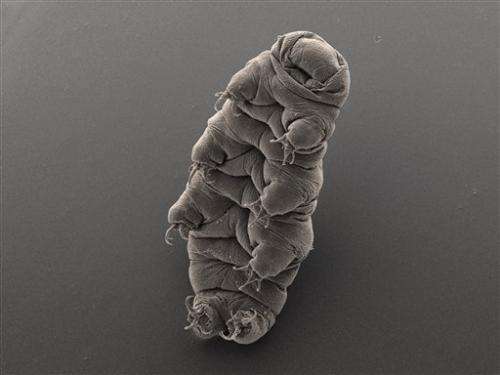
Deep below the ice, far from the playful penguins and other animals that bring tourists to Antarctica, is a cold and barren world that by all indications should be completely void of life.
But recently, scientists researching melting ice watched a half-foot-long (15-centimeter) fish swim by. Not long after that, they saw shrimp-like creatures.
In even more remote places on the continent, areas that haven't been exposed to sunlight for millions of years, scientists found a surprise right out of an alien movie: the DNA of a microscopic creature that looks like a combination of a bear, manatee and centipede.
Life that is simultaneously normal and weird, simple and complex thrives in this extreme environment. To the scientists who brave the cold and remoteness to find life amid the ice, it's a source of surprise and wonder. For extreme life experts, it's a testimony to the power of evolution.
"It really shows how tenacious life is," said Reed Scherer, a micropaleontology professor at Northern Illinois University. "The possibilities are just beyond our prediction."
Scientists look at creatures found in harsh Antarctica and ask: If life can survive here, why not on Mars or one of the ice-covered moons of Jupiter and Saturn where water lurks beneath the frozen surface? Maybe we aren't alone.
Certainly not here.
"You don't have to be a rocket scientist to look around and see how extreme this environment is," biochemist Jenny Blamey said, pointing to the black, volcanic rock covered by ice all around her on Deception Island. She wore a red parka with a black hood that was blown by the hard wind. While she spoke, her glasses fogged up and droplets of rain gathered on them.
"This is really like a desert, where you have extreme low temperatures," said Blamey, research director at the Biosciences Foundation in Chile who is studying the genetic material of microorganisms, essentially microbes that can't be seen.
Deception Island is a volcanic crater off the Antarctic Peninsula that used to be a refuge for whalers at the turn of the 20th century. It was evacuated many years ago after a handful of eruptions. Yet it is a garden compared to the spot where Ross Powell stopped to talk.
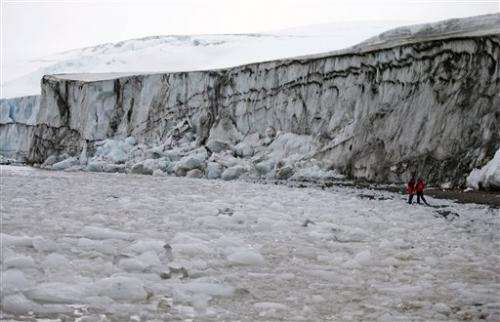
Powell had trekked across a separate part of the vast continent, hundreds of miles away from any buildings or research post, in a National Science Foundation mobile base camp. Speaking by satellite phone at the armpit edge of the Ross Ice Shelf in January, the professor from Northern Illinois University described what he and colleagues saw when they stuck a remote-controlled submarine a half mile under the ice to look at the leading underground edge of one of Antarctica's melting ice sheets.
It is an area of total darkness, 600 miles (1,000 kilometers) from the nearest ocean and with just 30 feet of liquid water under the ice. The water is 28 degrees Fahrenheit (minus 2 Celsius), but the saltiness keeps it from freezing.
Scientists turned on the cameras and were astonished to see a fish, thin and almost translucent, darting around and at times seeming to be playing peekaboo with the camera. Orange-shelled creatures called amphipods also drifted by.
When the scientists in the makeshift control room on the ice first saw the fish, they "started screaming and yelling and clapping," Powell said.
By the time a couple of days had passed, Scherer said the fish had become so common that "we got to the point of, 'Oh, there's another fish,' instead of, 'Oh my God! There's a fish!'"
As a joke, someone had brought a fish cage from New Zealand. But now it was no joke. The scientists tried to catch a fish using a giant net attached to the submarine's camera system and making leftovers out of bait from the previous night's supper.
They never caught a fish, but they did nab some of the amphipods. Still, Scherer, who loves seafood, wasn't tempted to nibble. "I thought they smelled kind of baity," he said.
Powell and Scherer are now trying to figure out where the animals came from and, even more importantly, where they get the food to survive.
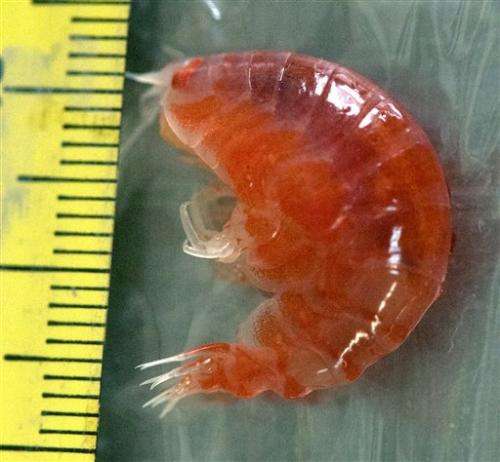
The search for life has also taken scientists to Lake Vostok, considered the most remote place on Earth. The mostly freshwater lake is buried under 2.3 miles (3.7 kilometers) of ice, and hasn't been near open air for 15 million years.
A couple of years ago, scientists took water samples from the lake and tested them for traces of life. They found genetic sequences for 3,507 recognizable species as well as about 10,000 species not yet known to science, said Scott Rogers, a professor of microbiology at Bowling Green State University, who worked on the study.
"It seems like most of (the species) were alive recently" and not fossils from thousands of years ago, Rogers said.
About 94 percent of the species they could identify were bacterial, essentially simple microbial life. But there were also fungi and even a couple of genetic traces of microscopic animals. That included DNA from tardigrades, also known as water bears, the tiny creatures that look like one-eyed extraterrestrial grizzlies when seen under an electron microscope. There were even indications that there might be small fish elsewhere in the chilly lake.
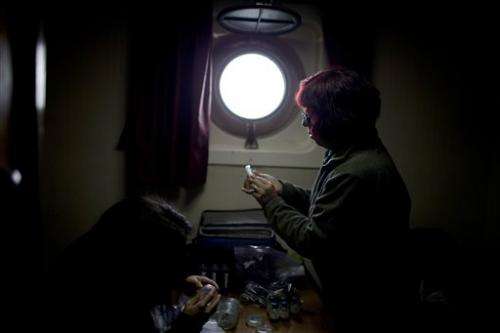
These types of findings excite astronomers who search for possible forms of life on other planets. Just this month, astronomers found that Jupiter's giant moon Ganymede had water under the ice. So does Europa, another moon of Jupiter, and Enceladus, a moon of Saturn. And then there are exoplanets, those circling bodies outside our solar system.
When unexpected creatures are found under the ice, "you start to wonder if that couldn't happen on an icy moon or exoplanet," said Lisa Kaltenegger, an astronomer and director of the Institute for Pale Blue Dots at Cornell University.
Science doesn't have those cosmic answers yet, but the mysterious fish in the darkness of Antarctica may hold clues.
-
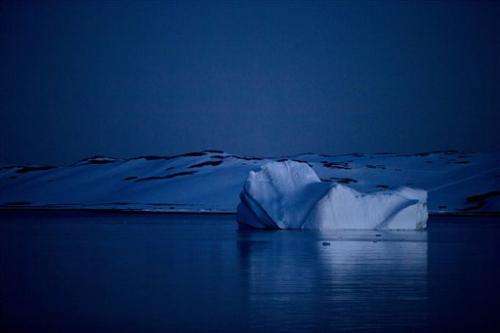
In this Jan. 25, 2015 photo, an iceberg floats near Antarctica's Byers Peninsula, Livingston Island, in the South Shetland Islands archipelago. Deep below the ice is a cold and barren world that by all indications should be completely void of life. But recently, scientists researching melting ice discovered fish and shrimp-like creatures. And in areas that haven't been exposed to sunlight for millions of years, scientists found a surprise: the DNA of a microscopic creature that looks like a combination of a bear, manatee and centipede. (AP Photo/Natacha Pisarenko) -
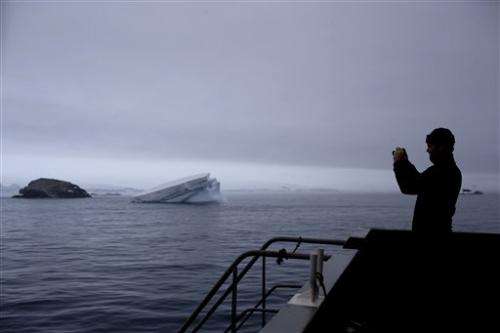
In this Jan. 22, 2015 photo, Swiss geologist Richard Spikings, who is in Antarctica studying the tectonic evolution of the peninsula and surrounding islands, takes pictures from the Chilean navy ship Aquiles near the Bernardo O'Higgins station in Antarctica. Life that is simultaneously normal and weird, simple and complex thrives in this extreme environment. To the scientists who brave the cold and remoteness to find life amid the ice, it's a source of surprise and wonder. For extreme life experts, it's a testimony to the power of evolution. (AP Photo/Natacha Pisarenko) -
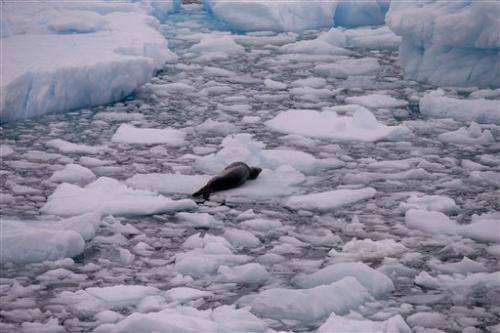
In this Jan. 22, 2015 photo, a leopard seal rests on a piece of floating ice near the Chilean station Bernardo O'Higgins, Antarctica. Deep below the ice, far from the animals that bring tourists to Antarctica, is a cold and barren world that by all indications should be completely void of life. But recently, scientists researching melting ice discovered fish and shrimp-like creatures. And in areas that haven't been exposed to sunlight for millions of years, scientists found a surprise: the DNA of a microscopic creature that looks like a combination of a bear, manatee and centipede. (AP Photo/Natacha Pisarenko) -
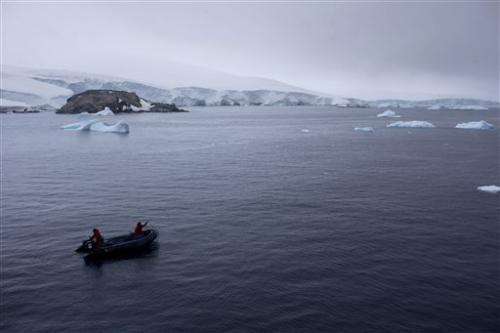
In this Jan. 22, 2015 photo, members of Chile's navy navigate to their country's station, Bernardo O'Higgins, in Antarctica. Deep below the ice is a cold and barren world that by all indications should be completely void of life. But recently, scientists researching melting ice discovered fish and shrimp-like creatures. And in areas that haven't been exposed to sunlight for millions of years, scientists found a surprise: the DNA of a microscopic creature that looks like a combination of a bear, manatee and centipede. (AP Photo/Natacha Pisarenko)
© 2015 The Associated Press. All rights reserved.





















